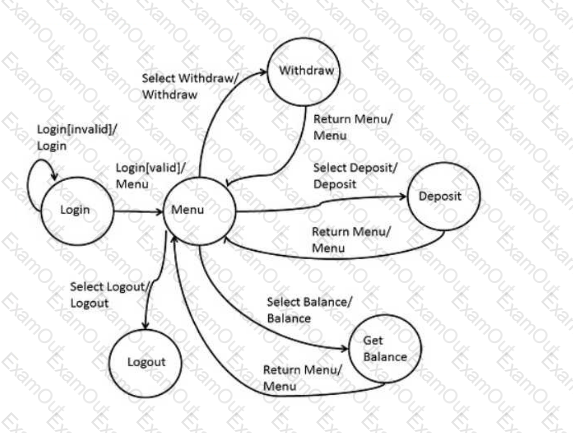Which of the following is an example of an adaptability test that should be executed by a Test Analyst?
When preparing test cases for an interoperability test, not all interactions may be clearly specified in the requirements documents. Which type of document is typically also used by a Test Analyst as the test basis for interoperability testing?
You are a Test Analyst in the banking domain. You have received the following requirement: "The system shall allow cash advances of at least 200 Euros for all supported credit cards. The following credit cards are supported: American Express, Diners, Visa, Mastercard and Eurocard.
Which one of the findings described below is true regarding this requirement?
You have been assigned to test an application that allows users to conduct banking online. You have been asked to verify the various installation environments for the product. According to the specification the product supports four browsers (Edge, Chrome, FireFox and Safari), three operating systems (Windows, Mac, Unix), and four languages (English, Spanish, French, German). As you are reviewing the specifications you realize that the actual operating system names and versions were not included, only the major category. From this, you conclude that if you pick one from each of these sets (for example, select Windows 10 for the Windows OS), that testing should be sufficient.
You have researched the product and determined that there should be no interaction between these three characteristics that would affect the operation of the system. However, you do want to exercise representative set of these options while conducting the other functional testing for the product.
If you decide to test pairs of combinations, how many combinations will you need to test?
A Test Analyst is investigating what should be tested for interoperability between two systems. In addition to looking at the information exchange between the systems, what else should be
identified for testing?
During testing of a mobile banking application, traceability matrices are defined and maintained between test cases and user stories. This task is supported by a test management tool. Testing is expected to report on the coverage level of the implemented and tested user stories. Which of the following test types is most likely being performed?
In the initial release of an insurance risk assignment application, a variety of test techniques were employed, especially equivalence partitioning.
After a thorough root cause analysis of this release, it was determined that the developers tended to incorrectly use ">" and "<" rather than the ">=" and " <= " in the code at several decision points.
This caused several borderline cases to be handled incorrectly.
Based on this analysis, how would you modify your test strategy for the next version's release?
Consider the following state diagram for a simple ATM.

The decision has been made to add the following capabilities:
Allow the customer to go from Get Balance to Deposit, Withdrawal or Menu.
Allow the customer to go from Deposit to Withdrawal, Get Balance or Menu
From Withdrawal the customer still will be able to go only to Menu.
How many test cases are required to achieve 100% 0-switch coverage of the new and existing capabilities?
Consider the following user story: As a student, I want to be able to buy a parking pass (priority: high) Acceptance criteria
- The student will not receive the parking pass if the payment is insufficient.
- Only registered students can buy a parking pass.
- The student can only buy one parking pass each month.
Which of the following checklist items would result in finding a defect for the user story?
During which test stage is functional appropriateness typically tested?

